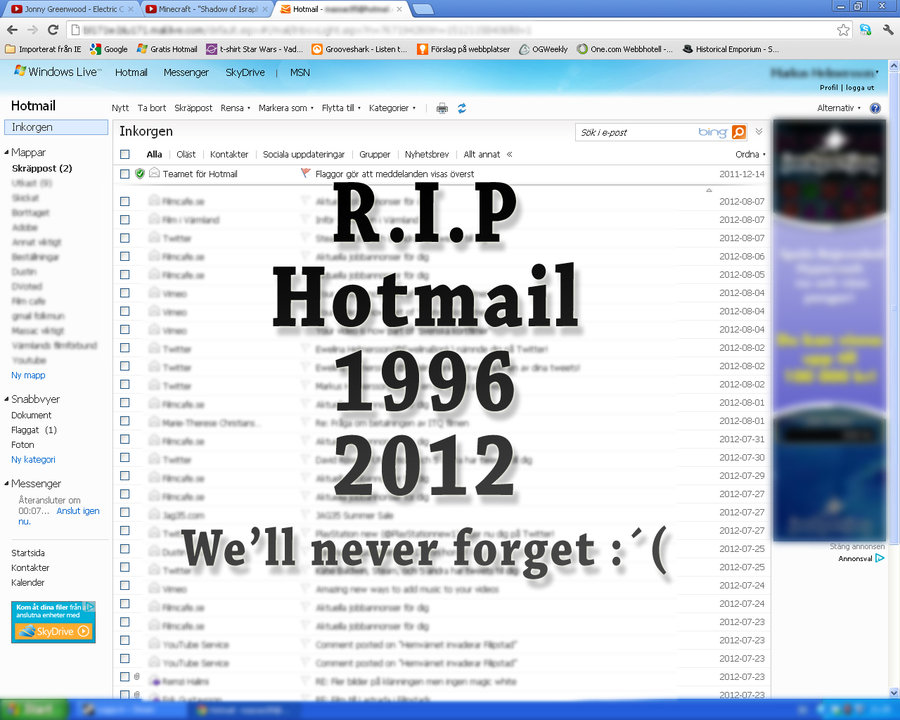
If there’s one defining buzzword of the 21st century, it’s “innovation.” Whether you live in Silicon Valley or the Fox Valley (look it up; it’s in Wisconsin), business people everywhere seem obsessed with the idea that innovation is what grows businesses—and for good reason!
If you’re in marketing, this isn’t news. For ages, marketers have known that the only way to get ahead is to be more creative, more hardworking, and more, well, “innovative” than competitors. Just think back to the heyday of newspapers. In the 1890s, every headline was optimized to peak attention; often creativity became sensationalism, and eventually newsboys were shouting all sorts of “creative” topics, whether they resembled news or not.
Luckily, marketers have managed to diversify their media since then. Today, every new medium for marketing increases the possibilities for creativity, and opens up new opportunities for inexperienced companies to take advantage and grow their audience. But while marketers have reveled in the creativity that has drives our field, we’ve also historically faced two constant struggles that limit our impact for business:
1) Measuring Marketing’s Return on Investment (ROI)
As new, creative methods were invented in the 20th century, it wasn’t always easy to accurately measure their impact. For instance, back in the 1950s, after the first televised commercials aired, companies found that they had very little ability to track the efficacy of the new advertising medium. The metrics for marketing ROI in TV were limited to sales results, which meant that understanding the success of one marketing method or another was virtually impossible.
2) Optimizing the Marketing-to-Sales Handoff
In addition, marketing between the point of attraction and sales took a lot of work. With few targeted ways of interacting with an audience, the seemingly most effective option was one-to-one interaction. In essence—cold calling was the best method of follow-up marketing.

As you can probably imagine, marketers never settled with these challenges. Throughout the late 20th century, marketers have been in constant pursuit of 1) creating accurate measurements of marketing impact, and 2) developing methods for decreasing the amount of work needed to nurture leads. Fortunately for marketers today, these challenges were eventually answered by the evolution of marketing automation.
Looking at software tools like HubSpot, it’s important to remember that from the beginning marketing automation has always been about solving these two goals together. When people think automation is just about work reduction or just measuring results, that’s when negative misconceptions arise for automation software. In reality, marketing automation synthesizes lead attraction and marketing measurement, enabling what has revolutionized marketing’s effectiveness: the ability for companies to qualify leads.
The Precursor: CRM & Sales
Old-timers might argue that they’ve been able to qualify leads for a while. They’ll point back to their choice of CRM, and begin rattling off how great Salesforce or Oracle works for them. But I’m not talking about qualifying leads for sales; marketing automation has enabled companies to qualifying leads earlier in your engagement process. Marketers with automation are able to segment their audience, know where to direct their marketing effort and monitor how effective their tactics prove to be.
When the CRM software developed at the turn of the century, its impact was huge because CRM services enabled professionals to finally organize their sales-ready leads and make offers that close the sale. What wasn’t ready yet were the pathways to reach out to users between initial engagement and the sale. CRMs didn’t remove cold calling or other tactics; but it did inform salespeople before making the call.
Email & Social Media: The Catalysts
Everything changed when email matured and the Internet gave birth to social media. The first free email system—Hotmail—was offered in 1996, but it took a while before email became the dominant form of communication that it is today. As email grew and grew by the 2000s, marketers caught on that it could also be the perfect delivery system for marketing outreach.

Spam went from a manageable trickle to a flood. By 2003, the CAN-SPAM act was passed in desperation to regulate how email could be used for marketing. Today, email marketing is still rated as the most effective tactic for increasing site visits among all other forms of lead generation.
Similarly, social media became a second pathway that direct messaging to target prospects is possible. With innovations like HootSuite, Klout, and various other kinds of social messaging clients, the move toward automation has been extremely natural.
Marketing Automation Fully Realized
With these developments in media, software developers have made the leap, and marketing automation now enables outreach and lead nurturing via email and social media that was never possible before. More importantly, automation allows you to take in lead information from site visits and conversion forms, and segment the audience by targets.
The power to qualify leads based on their marketing potential is what every company should be doing. No longer is it valuable to stretch to reach a giant audience just to bring in a sliver of the group for sales. Instead, marketers have to aim for quality relationship building that will increase the number sales by knowing who you’re marketing to better.
…and Beyond!
Marketing automation has made this process—lead qualification—an art that any company can take advantage of. Whether its HubSpot or another service, automation isn’t about cutting corners; it’s not about speed. It’s about being effective, whether in lead attraction, audience segmentation, or the final point of sale.


Recent Comments